Slow and Steady Parenting
Slow and Steady Parenting
Active Child-Raising for the Long Haul
(Birth to Age Three)
CATHERINE A. SANDERSON
M. Evans
Lanham Boulder New York Toronto Oxford
Copyright 2007 by Catherine A. Sanderson
First M. Evans edition 2007
This M. Evans paperback edition of Slow and Steady Parenting is an original publication. It is published by arrangement with the author.
All rights reserved . No part of this book may be reproduced in any form or by any electronic or mechanical means, including information storage and retrieval systems, without written permission from the publisher, except by a reviewer who may quote passages in a review.
Published by M. Evans
An imprint of The Rowman & Littlefield Publishing Group, Inc.
4501 Forbes Boulevard, Suite 200, Lanham, Maryland 20706
Designed and typeset by Chrissy Kwasnik
Distributed by NATIONAL BOOK NETWORK
Library of Congress Cataloging-in-Publication Data
Sanderson, Catherine Ashly, 1968
Slow and steady parenting : active child-raising for the long haul
(birth to age 3) / Catherine A Sanderson.
p. cm.
Includes bibliographical references.
ISBN-10: 1-59077-045-5
ISBN-13: 978-1-59077-045-0
1. Child rearing. 2. Parenting. 3. Parent and child. I. Title.
HQ769.S2564 2005
649.122dc22 2005011506
 The paper used in this publication meets the minimum requirements of American National Standard for Information SciencesPermanence of Paper for Printed Library Materials, ANSI/NISO Z39.48-1992.
The paper used in this publication meets the minimum requirements of American National Standard for Information SciencesPermanence of Paper for Printed Library Materials, ANSI/NISO Z39.48-1992.
Manufactured in the United States of America.
In memory of Kim Morgan-Ebling,
one of the best mothers in the world.
Acknowledgments
W riting a book is truly a process, and one that is impossible to complete without considerable assist-ance from many others. Therefore I wish to acknowledge these contributions and express my gratitude to various people. My agent, Jim Levine, who truly understood my initial vision for this book, provided thoughtful and constructive guidance in developing the initial proposal, persevered in finding this book a publisher, and helped guide me through the revision process. My editor, PJ Dempsey, who taught me the difference between academic and trade writing, provided specific and detailed comments on all drafts, and allowed me the space to find my own vision for this book. Mary Boughton, editorial assistant, for looking at the manuscript with a fresh eye and creating new and (vastly) improved headings. Darren Yopyk, my research assistant and friend, conducted numerous literature searches, gathered statistics, and even helped watch my own children while I frantically wrote. Many family members and friends generously shared their own parenting storiesgood and badwith me, which helped me flesh out my ideas with specific, concrete, and real life examples. My husband, Bart Hollander, believed in this project from the very beginning, allowed me to practice these ideas on our boys, and provided countless hours of childcare on weekends so I could write this book. And, last but not least, Andrew, Robert, and Caroline were the unknowing guinea pigs on whom virtually all of these ideas were tried.
Preface
A fter the birth of my first child in 1998, I eagerly looked for books that would help guide me through all of the child rearing decisions I was faced with:
Should I breast-feed or formula feed?
Should my child use a pacifier or suck his thumb?
How can I get my son to sleep at 4 AM ?
How can I get my child to eat healthy foods?
How can I avoid embarrassing tantrums in public places?
And although I consulted many parenting guides, I felt really frustrated with the information I read. First, I wanted guidance that was based on current scientific research so that I could be sure the choices I made as a parent were goodphysically and emotionallyfor my child. But many of the leading self-help parenting books are written by child psychologists or pediatricians who received their education and training some time agoand we know a lot more today about child rearing than we did twenty and thirty years ago. For example, for many years people thought formula feeding was safer and healthier than breast-feeding, and therefore only women who couldnt financially afford formula chose to nurse their infants. Of course we know now that breast-feeding is much better for babies (and their moms) than formula feeding, and hence virtually all women are encouraged to give nursing a try. Even as recently as ten years ago parents were told to put babies to sleep on their stomachs as a way of avoiding having the baby spit up during the night and potentially choke. But research has shown that babies who sleep on their stomachs are at a greater risk of experiencing sudden infant death syndrome (SIDS), and parents are now told that babies should be put to sleep on their backs. I therefore wanted current, scientifically-based information so that I could make informed decisions about my many child rearing challenges.
I also found that many of the leading child rearing guides were written by people who havent actively parented their own children in many, many years. Although these experts may have received considerable education and training in issues of child development, typically either as a pediatrician or psychologist, I wasnt sure about their ability to provide practical strategies for handling all the challenges I was facing every day (and night). Could I really trust the advice of a pediatrician, who would only see a child a few times a year for brief office visits, for guidance in how to make crucial day to day choices in how to raise my child? I frankly didnt see how such a person could give me concrete advice about my most pressing issues, such as how to get my child to sleep, how to handle temper tantrums, and how to get my child to eat healthy foods. I wanted specific and practical advice from a parent who was now inor had recently been inthe trenches, namely, facing the precise child rearing challenges I was facing.
Because I am a researcher by training, I started looking in scientific journals in medicine and psychology for advice about making various child rearing choices. And I was surprisedand pleasedto find that experts in both the fields of medicine and psychology had largely reached the same conclusions regarding the two major goals that virtually all parents have, namely, how to help their childrens psychological and physical well-being. This reading led me to develop a unique approach to parentingone that helps babies and toddlers develop into happy and healthy children, and makes parents already hectic lives easier in numerous ways. Because this approach focuses on taking a long-term perspective to major child rearing challenges, and avoiding the often tempting quick-fix solutions, I call this perspective slow and steady parenting .
In this book, I will show how to discard short-term, quick-fix approaches and replace them with a scientifically-based, long-term approach that can be applied to most child rearing challenges faced by parents of infants and toddlers, including breast-feeding, using a pacifier, eating, sleeping, and toilet training. Is this a revolutionary view of human behavior? Not at all. As adults, we often make long-term choices, even when the short-term choices are very appealing. Deciding not to order dessert is making the long-term choice to avoid weight gain, even when the short-term choice to enjoy the taste of cheesecake is tempting. Deciding to stay late at the office several nights, or even weeks, in a row while working on an important project is making a long-term choice to advance your career, even when the short term choice to get home early and relax is quite desirable. Deciding to put your paycheck in the bank is making the long-term choice to save money for next summers vacation, even when the short-term choice of purchasing a fancy watch or flat-screen television is very appealing. We adults (usually) understand that even very tempting short-term choices can have negative long-term consequences. This book is therefore based on a very simple and straightforward premise, namely that quick-fix solutions to many child rearing challenges often have hidden consequencesIve simply taken what we all know about making important choices in life, and have applied this perspective to making important choices in child rearing.
Next page


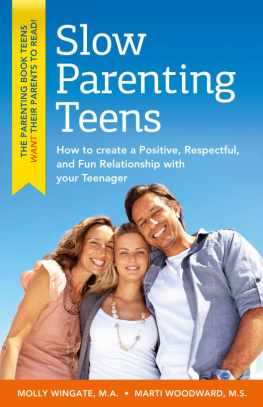
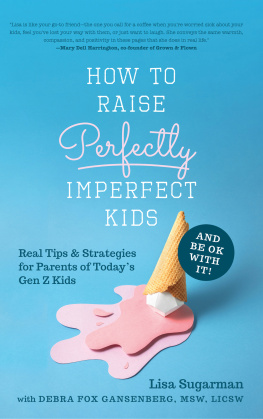


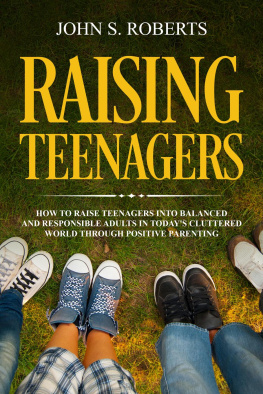
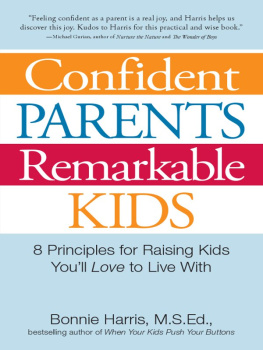

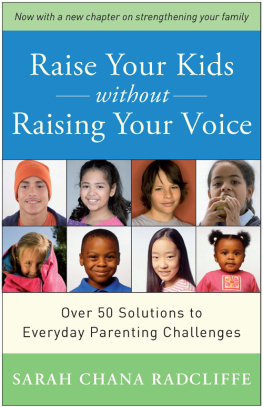
 The paper used in this publication meets the minimum requirements of American National Standard for Information SciencesPermanence of Paper for Printed Library Materials, ANSI/NISO Z39.48-1992.
The paper used in this publication meets the minimum requirements of American National Standard for Information SciencesPermanence of Paper for Printed Library Materials, ANSI/NISO Z39.48-1992.